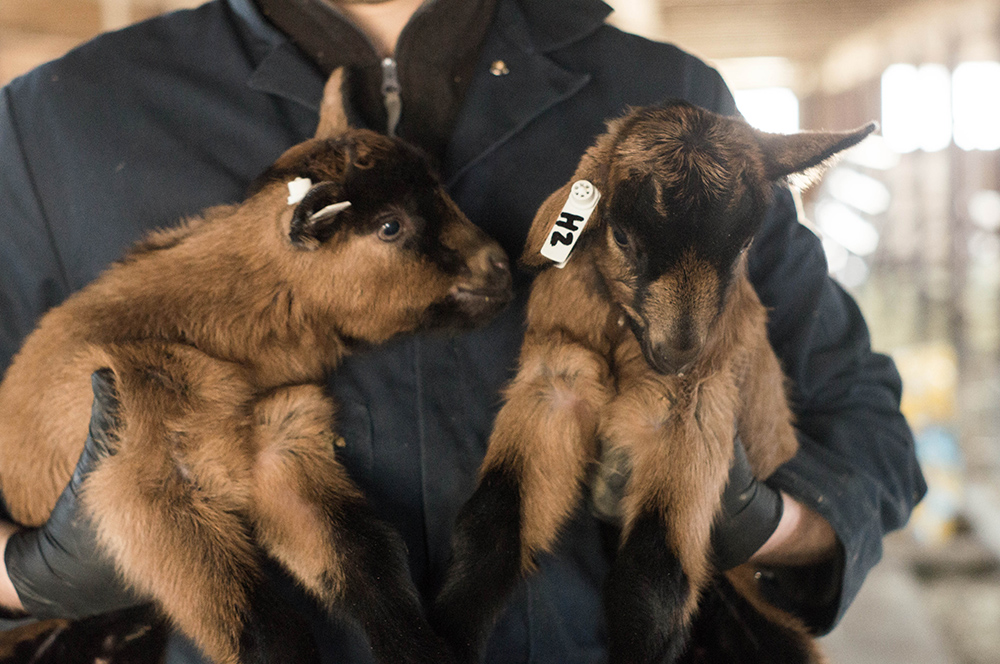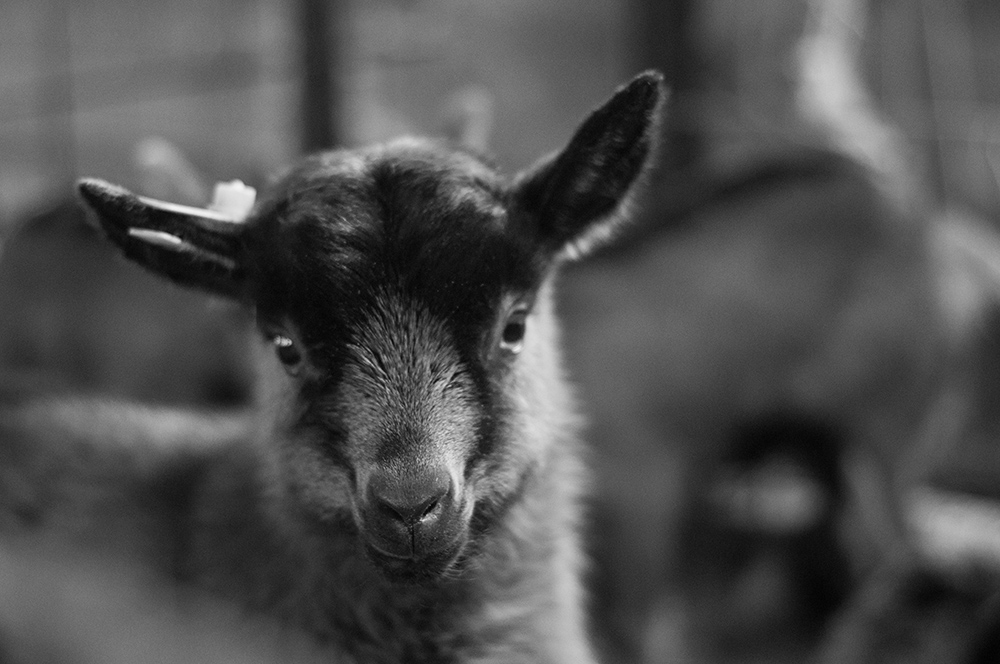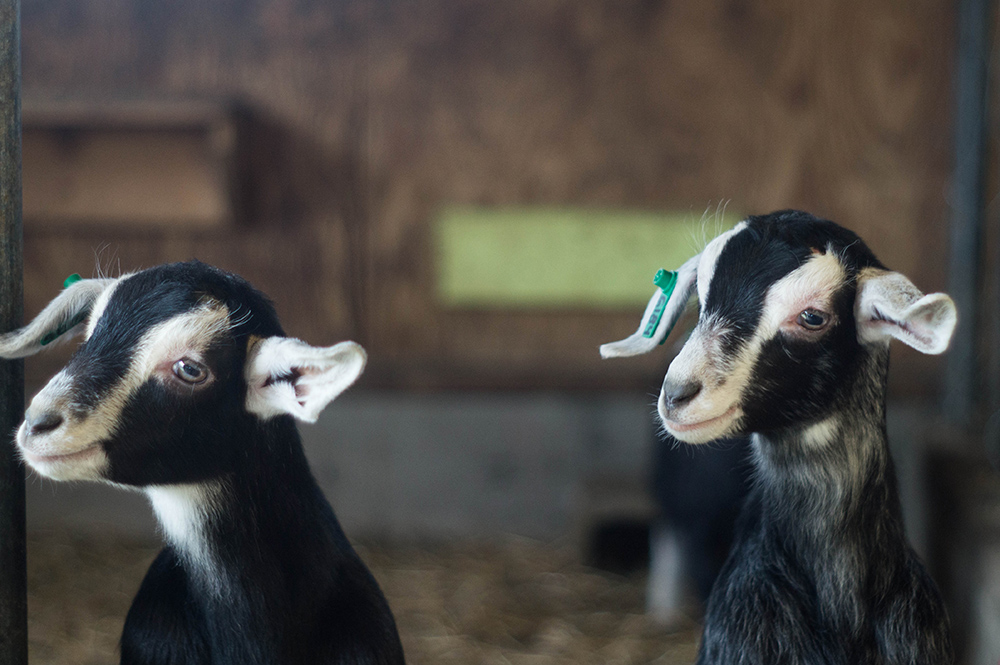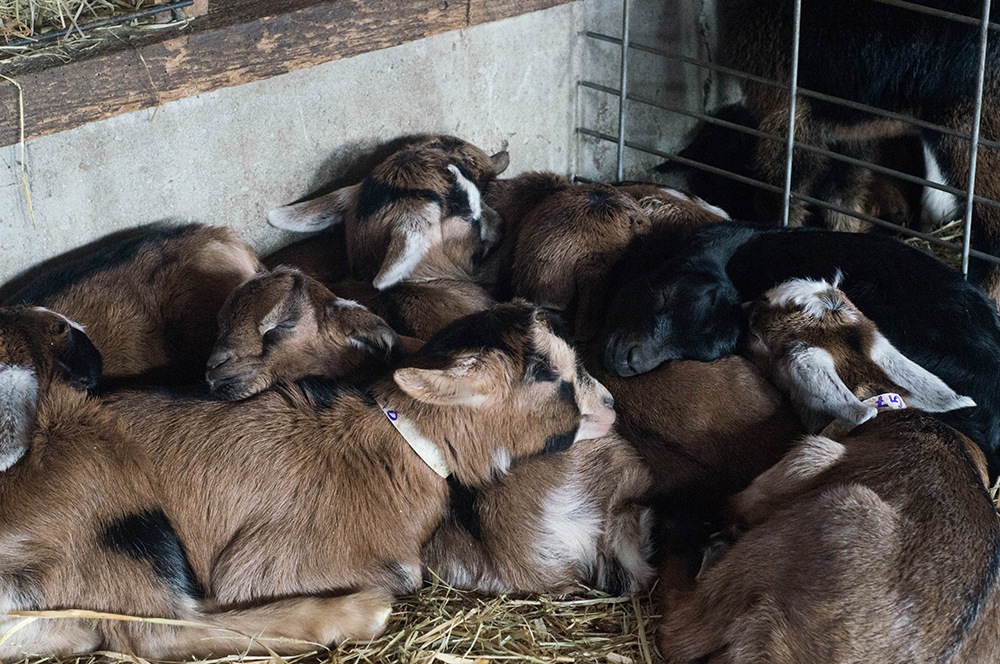
Ah, spring — the most fickle season of the year. This is a time for tender shoots to sprout from the earth, and for migratory flocks to fill the air with their familiar songs once more.
(Editor’s Note: Mark sent this update back in March. We’re sure there are many, many more kids playing on the farm by now!)
It, too, is a time for Father Winter to remind us that he is apt to hang around a bit longer than he is welcome. When on one day we might find ourselves in short sleeves, under the vernal sun, we are just as likely to be in the all-too-familiar company of icicles, snow drifts, and chimney smoke on the next. And while Mother Nature plays this plodding game of tug of war, the slow months of farming cease to be and we prepare ourselves for the buzz and bustle of new life on the farm. This is kidding season.

As I write, we at Consider Bardwell Farm have welcomed 150 kids into the world, and are expecting that number to double by the end of next month. It is no secret around here: this is a hectic season for us. With new goats “freshening” (read: giving birth) almost every day, there are ever more kids to feed, ever more goats to milk—plus the occasional blizzard or post-blizzard barn flood to deal with in between.
We start our days long before the crack of dawn, yet still find ourselves back in the barn at bedtime, doing one last check for anyone that may be going into labor. This is the farmer’s equivalent to being “on call,” for weeks on end. It’s tiring work, but not draining work. For one cannot help but fall under the spell of this steady stream of new life on the farm. It is life-giving and regenerating, in spite of any peril along the way.
It’s almost startling how quickly a kid starts to get its feet underneath itself. In a literal sense, newborns usually manage to scramble to their feet within minutes of birth—as compared with us humans, who usually need a year or so before we take our first steps. Some births are routine, seemingly effortless, while others are drawn out and difficult, requiring careful intervention. In either case, the moment a mama doe pushes out a healthy kid (or three) is remarkable.
She will start to clean them off, and then—before you know it—there they are, standing all wobbly legged. In spite of such apparent resilience, you are quickly reminded that they are brand new participants in life on Earth. Some kids can hardly manage to eat any colostrum at all. So, we bottle-feed each kid to ensure they get enough of those precious nutrients during their first few days.

Most of the time the newbies learn quickly, graduating to pens where they eat together from a bucket-feeder, three times per day. Their growth is something to behold: they go from bottle-fed, struggling to open their eyes, to voracious and competitive eaters, bouncing off the walls (and each other) after feedings. Before long, they start munching on hay and grain, chewing their cud like miniature versions of their parents. There are few things as entertaining as watching kids spring around the aisle of the barn when removed from their pens. Their little gummy faces and fluffy, all-bones-and-belly bodies are enough to tug at the heart strings of even the most hardened farmers. (And, in case you haven’t figured it out, none of the farmers here are particularly hard-of-heart.)
A very real part of the joy that comes with helping these kids grow to be healthy is the alternative scenario. On any livestock farm, there are animals who—for some reason or another—fail to thrive. During this kidding season, like all those that came before it, there have been stillborns; there have been premature kids who have not made it; and there will almost certainly be kids whose immune systems will not prove strong enough to suppress some fatal bacterial or parasitic issue.
These are constant reminders of the fragility of the lives in our care, and we try to stay one step ahead of any potential problems. We have probiotics and goat electrolytes on hand for any kids with digestion issues, we keep them up to date on their shots, and we are constantly replenishing their pens with fresh, dry bedding.

You can imagine how satisfying it is, then, when we walk into a barn full of happily bleating and yelling kids at feeding time! It’s a sign that we are on track with our mission: to help these kids get off to a good start, so we can raise them in a manner that prioritizes their welfare, together with that of the land that sustains them throughout their lives.
Kidding season is a time of beginnings: the beginning of a new life cycle, the beginning of a new season. It comes with a sense of freshness—life-giving and regenerating, indeed—that no obstacle can sap from those of us who are so privileged to participate in this miraculous season.
Editor’s Note: Find a growing line of unique and time-tested supplies for livestock care at Lehmans.com!






























